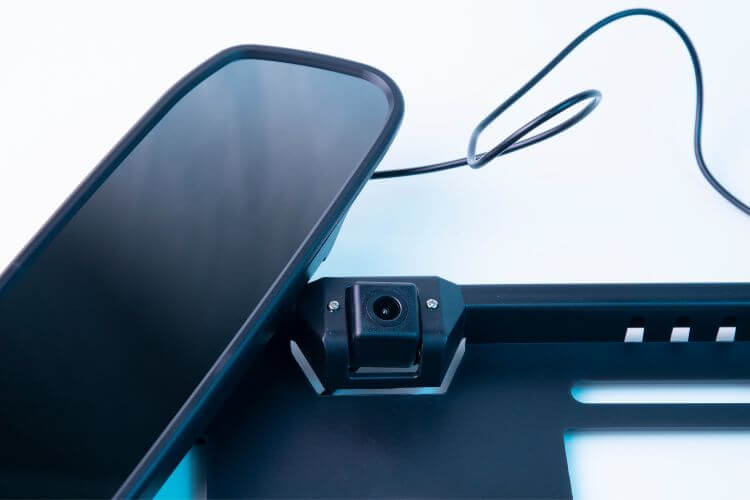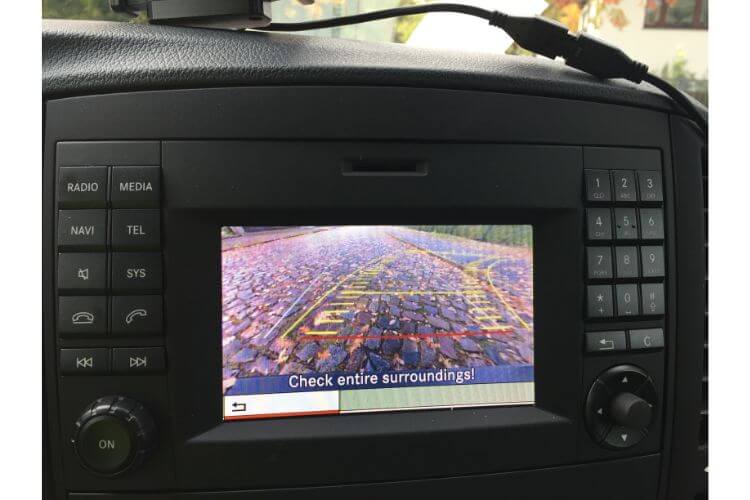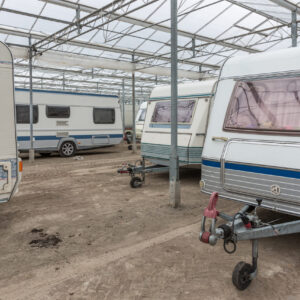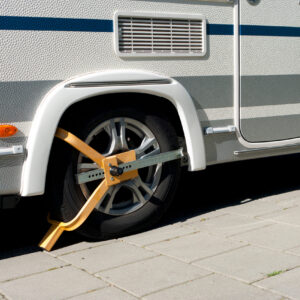Adding a rear view camera to a caravan can be a great investment for any caravan owner. It provides an extra level of safety when reversing and manoeuvring the caravan.
With a rear view camera, you can see what’s behind you and avoid any potential accidents or collisions. Moreover, it can make the process of reversing a caravan much easier, especially for those who are new to caravanning.
However, fitting a rear view camera in a caravan may seem like a daunting task, especially for those who are not familiar with electrical wiring or caravan maintenance. But don’t worry, it’s not as complicated as it may seem.
With the right tools, equipment and guidance, you can easily fit a rear view camera in your caravan and enjoy the benefits of safer and easier manoeuvring.
In this article, we will provide you with a step-by-step guide on how to fit a rear view camera in a caravan. We will cover everything from choosing the right camera and equipment to installing and wiring the camera.
By the end of this article, you will have all the knowledge and confidence you need to fit a rear view camera in your caravan and enjoy safer and easier caravanning.
Choosing the Right Camera

Wired vs Wireless Cameras
When it comes to choosing a rear view camera for your caravan, you’ll need to decide between a wired or wireless system. Wired cameras are typically more reliable and offer a higher quality image, but they can be more difficult to install and may require professional help.
Wireless cameras, on the other hand, are easier to install and can be more convenient, but they may suffer from interference and signal loss.
If you’re looking for a high-quality image and don’t mind the extra installation effort, a wired camera may be the best choice for you. However, if you prioritize ease of installation and convenience, a wireless camera may be the better option.
Camera Placement
The placement of your rear view camera is also an important consideration. You’ll want to choose a location that provides the best view of the area behind your caravan, while also being protected from damage and the elements.
Some common locations for rear view cameras include:
- Mounted on the rear of the caravan
- Mounted on the number plate
- Mounted on the roof
Each location has its own advantages and disadvantages. For example, a camera mounted on the rear of the caravan may offer the best view, but it may also be more vulnerable to damage from debris or other objects.
A camera mounted on the number plate may be more protected, but it may not offer as wide of a view.
Consider your specific needs and preferences when choosing the location for your rear view camera.
Preparing for Installation
Gathering Tools and Materials
Before starting the installation process, it is important to gather all the necessary tools and materials.
Here is a list of tools and materials that you will need:
| Tools | Materials |
|---|---|
| – Drill | – Rear view camera kit |
| – Screwdriver set | – Electrical tape |
| – Pliers | – Cable ties |
| – Socket set | – Wire strippers |
| – Spanner set | – Power drill |
It is important to ensure that you have all the necessary tools and materials to avoid any delays during the installation process.
Checking Electrical Connections
Before starting the installation process, it is important to check the electrical connections of your caravan.
Here are a few things to check:
- Check the battery voltage to ensure it is sufficient for the installation process.
- Check the fuse box to ensure that all the fuses are in good condition.
- Check the wiring of your caravan to ensure that there are no damaged or exposed wires.
- Check the electrical system of your caravan to ensure that it is compatible with the rear view camera kit.
It is important to ensure that the electrical connections of your caravan are in good condition to avoid any electrical issues during the installation process.
Installing the Camera

Mounting the Camera
The first step in installing a rear view camera in your caravan is to mount the camera in a suitable location. Typically, the camera is mounted on the rear of the caravan, just above the number plate.
To mount the camera, you will need to use a bracket and screws. Make sure the bracket is securely attached to the caravan to prevent the camera from falling off during transit.
Running the Wires
After mounting the camera, the next step is to run the wires from the camera to the monitor in the car. This can be done by running the wires along the length of the caravan, under the floor, or through the ceiling.
Make sure the wires are secured and protected from damage. If you are not confident in running the wires yourself, consider hiring a professional to do the job.
Connecting the Camera to Power
Once the wires are in place, the final step is to connect the camera to power. This can be done by tapping into the reverse light circuit or by connecting the camera to a separate power source.
If you are tapping into the reverse light circuit, make sure you use a suitable fuse to prevent damage to the caravan’s electrical system. If you are connecting the camera to a separate power source, make sure the power source is rated for the camera’s voltage and amperage requirements.
By following these steps, you can install a rear view camera in your caravan without drilling any holes. Remember to take your time and be careful when mounting the camera and running the wires to ensure a safe and reliable installation.
Connecting the Monitor
Mounting the Monitor
Before connecting the monitor, you should decide where to mount it. A popular choice is to display the camera feed to a screen that clips over your rear view mirror.
You can also mount it on the dashboard or on the windshield using a suction cup mount. Make sure the monitor is in a position that is easy to see and does not obstruct your view of the road.
Running the Wires
Once you have decided where to mount the monitor, you need to run the wires from the camera to the monitor. First, locate the spot where you want to mount the camera on the rear of your caravan.
Then, run the camera cable along the roofline and down the side of the caravan. Make sure to secure the cable using cable ties or clips. Next, run the cable through the caravan to the front where the monitor will be mounted. You can run the cable under the carpet or along the edge of the walls.
Connecting the Monitor to Power
After running the cable, you need to connect the monitor to power. Most monitors come with a power cable that can be connected to the cigarette lighter or the fuse box.
If you choose to connect it to the fuse box, make sure to use a fuse tap to avoid damaging the original circuit. Once the power is connected, turn on the monitor and check that the camera feed is displayed correctly.
That’s it! You have successfully connected the monitor to the rear view camera in your caravan. Now you can enjoy a safe and stress-free driving experience.
Section 6: Testing the Camera and Monitor
Checking the Camera View
Before hitting the road, it’s important to test the camera view to ensure everything is working correctly. Start by turning on the monitor and checking that the camera is displaying a clear image. If the image is blurry or distorted, you may need to adjust the camera angle or focus.
Next, check that the camera is capturing the entire area behind the caravan. You should be able to see the ground immediately behind the caravan, as well as a wide enough angle to capture any obstacles or other vehicles approaching from the sides.
Finally, test the camera at night to ensure the image quality is still clear and bright. If the image is too dark, you may need to install additional lighting to improve visibility.
Adjusting the Camera Angle
If you find that the camera view is not capturing the entire area behind the caravan, or if it’s angled too high or low, you may need to adjust the camera angle.
Start by loosening the screws or bolts that hold the camera in place, and then gently adjust the angle until you have the desired view. Once you’ve found the perfect angle, tighten the screws or bolts to secure the camera in place.
It’s important to note that you may need to adjust the camera angle over time, especially if you frequently travel on bumpy or uneven roads. Regularly checking and adjusting the camera angle will ensure you always have a clear view behind the caravan.
Troubleshooting Issues
If you experience any issues with the camera or monitor, there are a few troubleshooting steps you can take.
First, check that all connections are secure and that the power source is working correctly. If the issue persists, try resetting the system by disconnecting the power and then reconnecting it after a few minutes.
If you’re still experiencing issues, consult the user manual or contact the manufacturer for further assistance. It’s important to address any issues promptly to ensure you always have a clear view behind the caravan.



